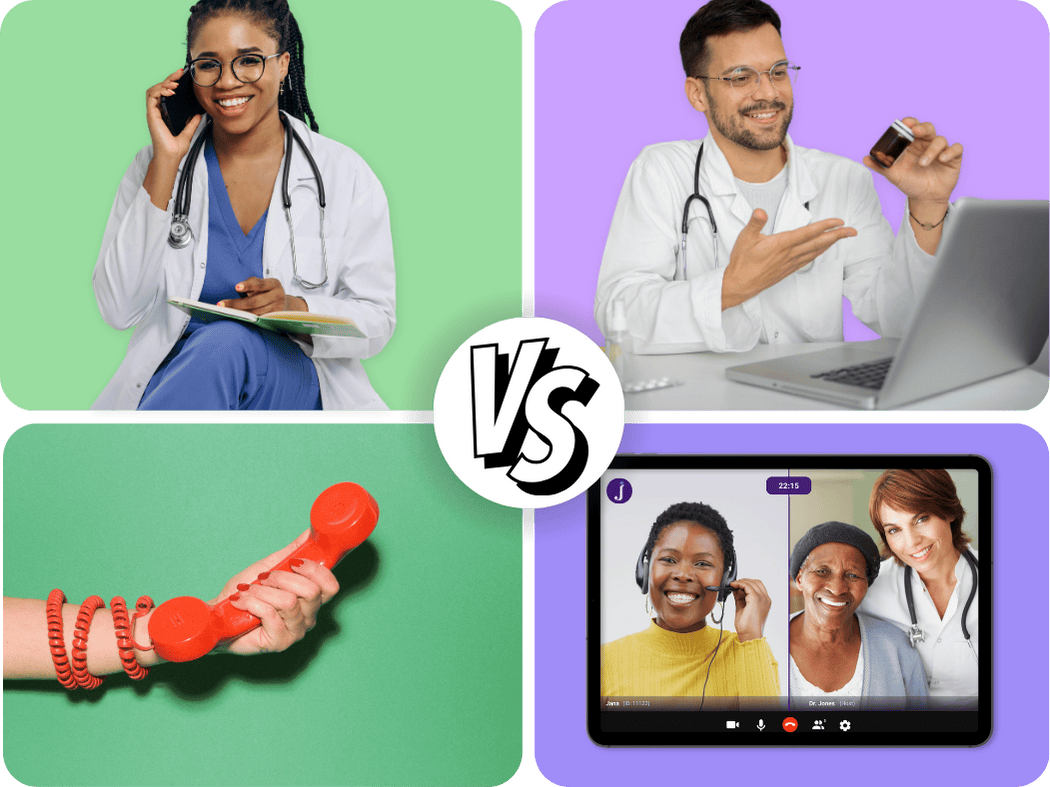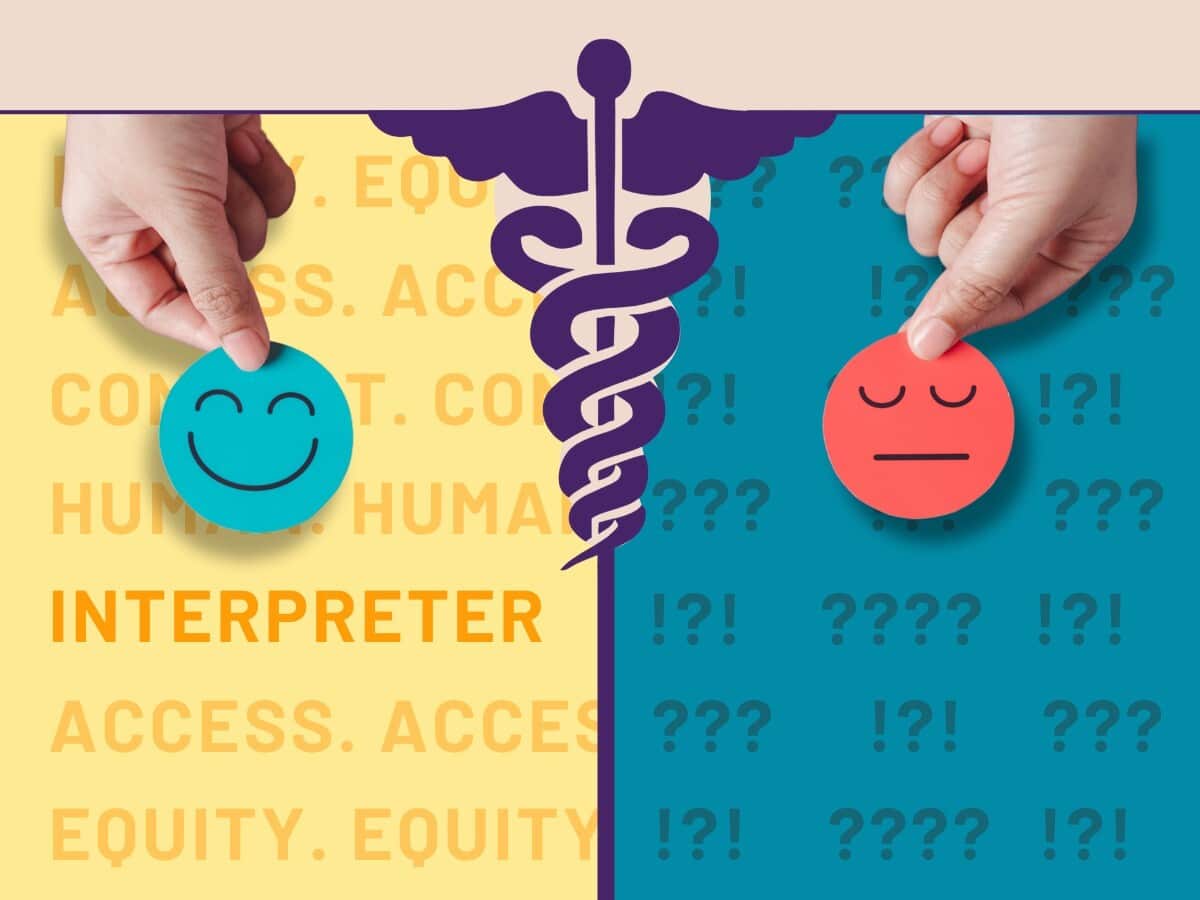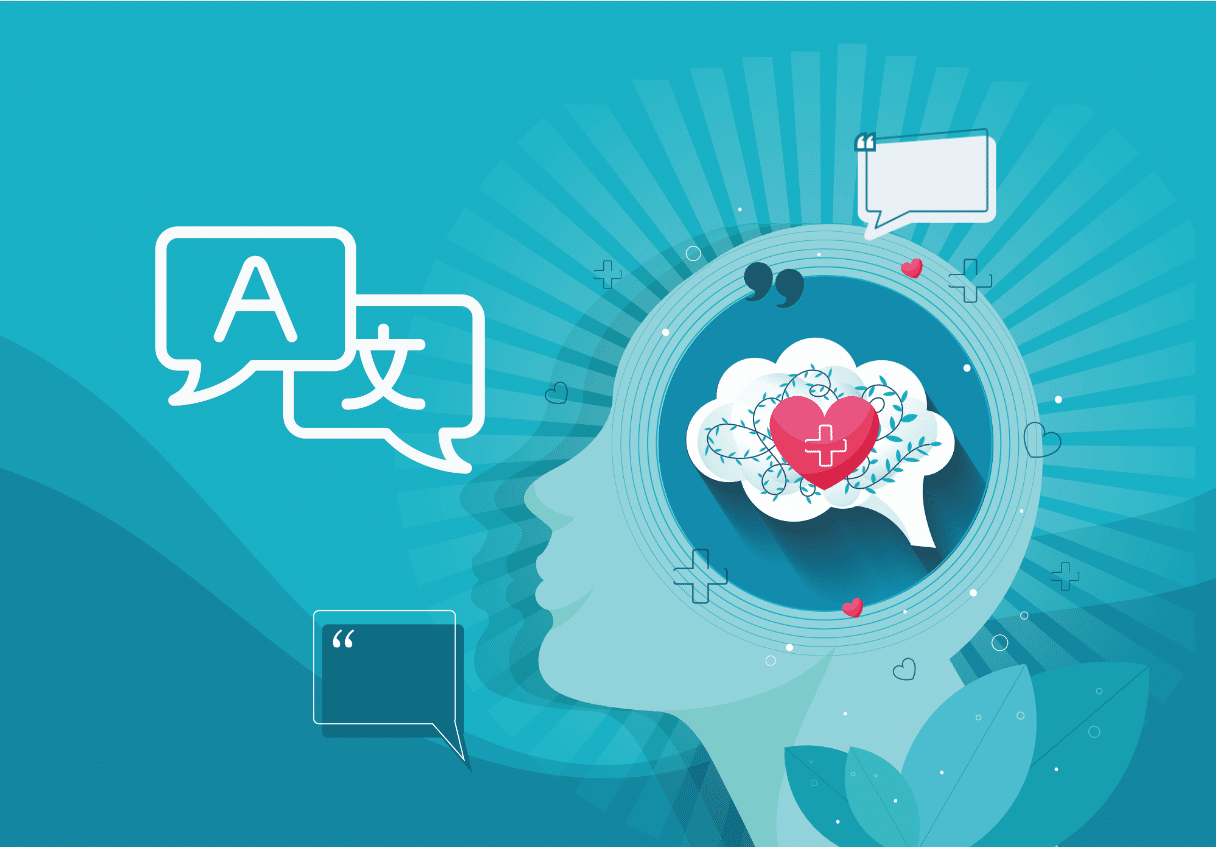More Than Words: Why Visual Cues Matter
VRI (Video Remote Interpreting) allows interpreters to capture the full range of human communication in a way OPI (Over the Phone Interpreting) simply can’t. When people speak, they don’t just communicate with their voices—they communicate with their entire selves. And interpreters need access to all of it.
Without video, interpreting becomes a guessing game. How do you capture tone without seeing a frown? Or clarify intent without noting a gesture? Research shows that 55–65% of meaning is conveyed nonverbally—through facial expressions, posture, gaze, and gestures (NIH, 2023).
Interpreters as Communication Catalysts—Not the Center
Communication succeeds through many channels—tone, timing, trust, cultural awareness, and yes, language. But when people don’t share a common language, interpreters become a vital conduit, helping everyone at the table understand not just the words, but the meaning behind them.
With VRI, interpreters can engage more fully—reading body language, building rapport, and offering cultural insight when needed. They help preserve the human dimension of dialogue across language barriers, ensuring that what’s said isn’t just translated—but understood.

8 Ways Interpreters Maximize Impact with Video (VRI)
1. They Read the Full Picture
VRI gives interpreters access to facial expressions, gestures, posture, and eye contact—all critical to understanding intent. Without these visual inputs, communication risks becoming incomplete or misunderstood.
2. They Use Their Presence to Build Trust
On video, interpreters show focus, professionalism, and calm through eye contact, posture, and a distraction-free background—helping put participants at ease.
3. They Reinforce Meaning Through Mirroring
Mirroring gestures or expressions helps interpreters build rapport and empathy—essential in emotionally charged or culturally sensitive settings.
4. They Shift Roles Seamlessly
Interpreters often move between being a neutral conduit and a cultural broker. On video, they can signal shifts with gestures or facial cues—pausing to clarify and returning smoothly to the dialogue.
5. They Anticipate What’s Coming
Video allows interpreters to see when someone’s about to speak, or when confusion or emotional tension is rising. These cues help them manage turn-taking and maintain clarity.
6. They Adjust in Real Time
By watching participant reactions, interpreters can fine-tune tone, pacing, or terminology on the spot—ensuring the message truly resonates.
7. They Humanize the Interaction
For NEP (Non-English Preferred) speakers, especially those from marginalized communities, seeing an interpreter who reflects their background fosters trust and comfort in unfamiliar or high-stakes environments.
8. They Model Respectful Communication
Interpreters on video don’t just convey words—they model empathy and professionalism, reinforcing the tone and integrity of the entire conversation.
What the Research Says
When it comes to outcomes—comprehension, satisfaction, safety—VRI consistently outperforms OPI. The data backs that up. Here are just a few studies showing how powerful video can be:
| VRI gets 24% higher comprehension among NEP (Non-English Preferred) patients over OPI. (Patient Education and Counseling) | Healthcare orgs see a 33% boost in patient satisfaction with VRI, especially during discharge or sensitive discussions. (PMC) |
| Video communication reduces resolution time and improves satisfaction in customer support scenarios when compared to audio-only or chat-based methods. (SnapCall) |
Video-based telehealth visits earned higher satisfaction scores than both audio-only and even some in-person visits—especially in provider communication and overall experience. (National Library of Medicine) |
| VRI results in 21% fewer interpreter errors in clinical settings vs OPI (NIH National Library of Medicine) | Roughly 55–65% of meaning is conveyed nonverbally—through facial expressions, posture, gaze, and gestures. (NIH) |
Why Jeenie Makes Video Easy—and Equal
Most interpreting platforms charge more for VRI. Not us. Jeenie was built with a clear goal to make the best communication tools available to everyone—without penalty. That’s why we have:
✅ The Same per-minute rate for VRI and OPI
✅ The largest selection of languages available on-demand via video
✅ A platform engineered for crystal-clear video quality
Simply put, we believe video should be the default, not a costly upgrade.

Final Thought: You Can’t Interpret What You Can’t See
Whether it’s healthcare, social services, crisis response, or courtrooms—video interpreting delivers better connection, better understanding, and better outcomes.
Jeenie is proud to lead the industry with a platform that honors the full power of human communication—and the skilled interpreters who make it possible.









